From Marrakesh, we set off for the Sahara desert. We paid for a four-day tour, which started with a driver picking us up in Marrakesh in a 4×4 and driving east for about 10 hours. The drive itself was more of an adventure than we had bargained for because our driver was the single worst driver I’ve ever been in a car with. The word “smooth” had no meaning to him, it was constant jerkiness, both front to back and side to side. About 30 minutes in, I acted like I loved to drive and asked if I could as a way to discreetly handle the situation (no, it’s illegal for a tourist to drive that kind of car). So we had to be less discreet, over and over, because it was unbearable. At one point when crossing the desert he actually fell asleep, first evidenced by drifting off the dirt track and not correcting it, confirmed by closed eyelids. I was in the front seat next to him, so woke him up only to hear his ridiculous denials, which turned into accusations that it was Peter — in the backseat — who fell asleep (which wasn’t true and who would care if it were, Peter wasn’t DRIVING). Crazy stuff. Tip: $0.
But I digress, because other than the actual driving, the drive itself was great. We followed what we think was an old caravan route from Marrakesh to the Sahara, and saw landscapes that varied from dry mountains to the huge Draa River Valley, which is filled with date palmeries. We also saw several old kasbahs, which apparently means fortress, but were mostly like high walled villages, many of which are still lived in today. We walked around the famous kasbah of Ait Ben Haddou, which is a Unesco World Heritage site and several movies, including Gladiator, have been filmed there. I even saw the “cell” where Russell Crowe was kept before he started training to be a gladiator. Speaking of films, many Hollywood movies that are supposedly set in South Asian and Middle Eastern countries are actually filmed in Morocco because it’s safe and easily serves as a realistic version of these places.
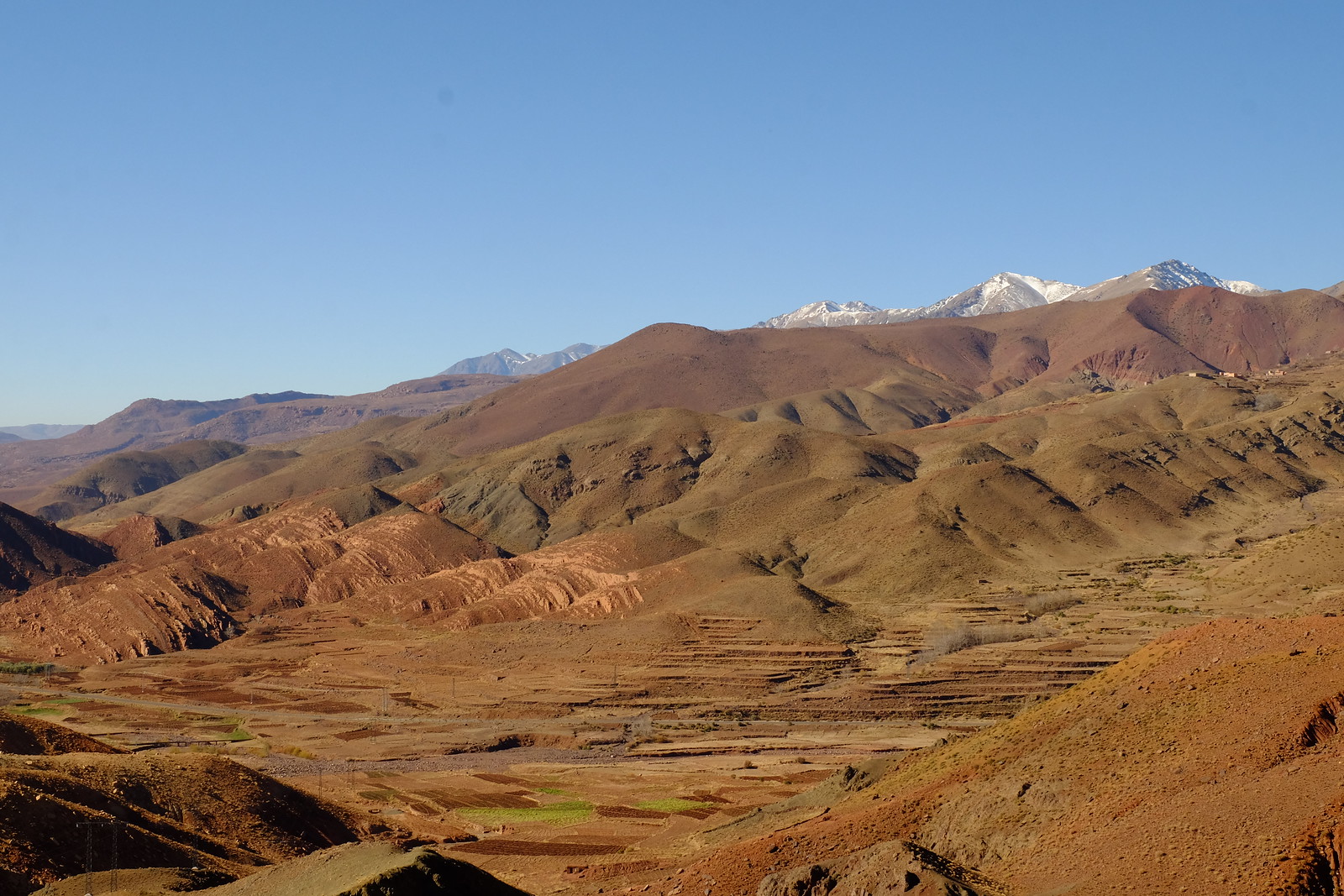 The snow covered Atlas mountains in the distance.
The snow covered Atlas mountains in the distance.
 You can see the palmeries of the Draa Valley through these arches.
You can see the palmeries of the Draa Valley through these arches.
We finally reached our destination for the day, the small town of M’hamid, which is literally at the end of the road before the desert begins and is also only about 30 km from the (closed) Algerian border. We slept overnight there, and wandered into town the next morning to see the people. The further east we had driven, the more we had seen men dressed for the desert with their long cotton scarves wrapped around their heads. In M’hamid, it was everywhere. It had a much more exotic feel than anything we’d seen elsewhere in Morocco, and that’s saying something!
That afternoon, we started out across dirt tracks into the desert to our camp, which was only 2-3 hours away by 4×4. First we crossed a hamada, or “stone desert,” which was very flat and rocky. We saw a few camels and people there, and eventually could see dunes in the distance. We arrived at our camp, which was at the edge of the dunes, just in time to go for a hike in the dunes and take photos in the late afternoon light. We were in Erg Chigaga (“erg” means “dune field”), which is the largest erg in Morocco by area, and the most remote so much less traveled to than the other big erg in Morocco, which is why it appealed to us.
The dunes were incredibly beautiful in the late afternoon light. We hiked around, took a ton of photos, including several of a man dressed in blue like the Tuaregs (also called “blue men”) that we’d read about. After watching the sun go down, we hiked back to camp for dinner and then, around the fire, heard traditional music played and sung by the young men who worked there. That was a little awkward because we were the only ones there that night, but the next night there was another couple and it was better, but felt really touristy. They say the desert gets cold, and in December that was definitely true. We slept in unheated tents with a ton of blankets and were still cold. The stars, however, were amazing.
The next day I decided to wake up extra early and hike into the dunes to take sunrise photos, while Peter stayed behind for a little more sleep. I hiked over to the tallest dune and went to the top to wait for the sun to rise high enough to get enough shadows to make the photos interesting. It was quite a steep hike; even though I had started with a down coat and hat, I had stripped down to a long sleeve shirt and was sweating by the time I got to the top. Climbing dunes is as hard as they say! But the view was incredible and really peaceful at that time in the morning, just sand dunes as far as I could see. Photos taken and dune contemplation done, I started down to be back in time for breakfast. I got to within five minutes from the camp when I realized I had forgotten my hat at the top of the dune. &*#^@%@!!! I had to go back, I just couldn’t litter like that, plus it was hand knit by a woman in Fez, and finally, I was going to need that hat again tonight. So, back I went to climb that steep dune again just as it was starting to really warm up. Meanwhile, back in camp, I was now quite late for breakfast and Peter started to get worried so started out to find me. After some initial confusion while following my tracks, he eventually saw me in the distance and was relieved to hear it was nothing more than a nearly lost hat.
After breakfast, we mounted camels and rode over to a nomadic family’s house. It was interesting to see how they lived. The man is a camel herder and we didn’t see him, just the wife and their daughter. We had lunch under an acacia tree in the desert before going back on the camels. The saddles we sat on were actually metal pack saddles that they had put thin, folded, cheap foam mattresses on, and were certainly uncomfortable. Plus a camel’s gait is different from a horse so the up-top movement is different — much more back and forth — and one day was fun but we’re glad we didn’t sign up for a multi-day camel trek. Take a look at this video of me and decide how many hours you could do this for:
After another night under the beautiful but cold stars, we left to go back to Marrakesh via a different route and before we left the desert, saw a nomadic man moving his huge camel herd. It was the stuff straight out of Arabian Nights. Back on a real road, we stopped at a Berber village to look at their carpets, which were beautiful and I mentally expanded my future shopping trip locations. All in all, if we were to do this again — and we might! — we would rent a car ourselves and take 2-3 days each way to and from the desert so we could spend more time in the interesting places along the way. Even with the bad driver, this was the highlight of our trip to Morocco.





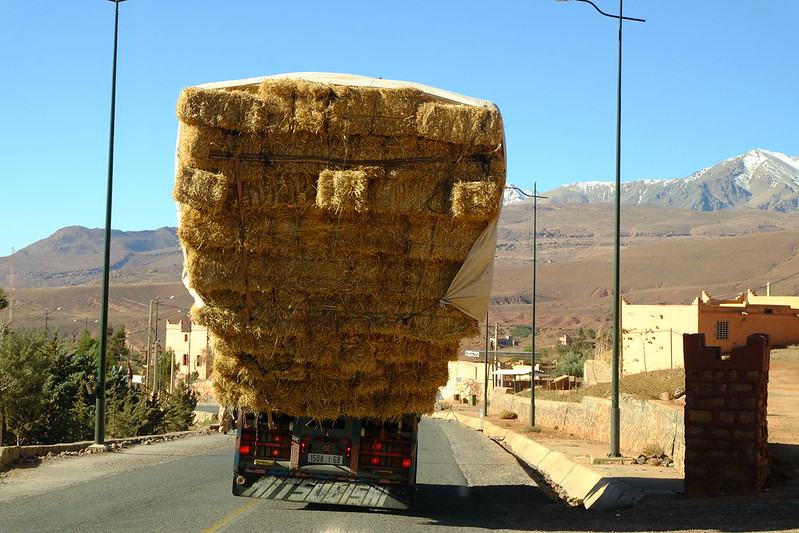





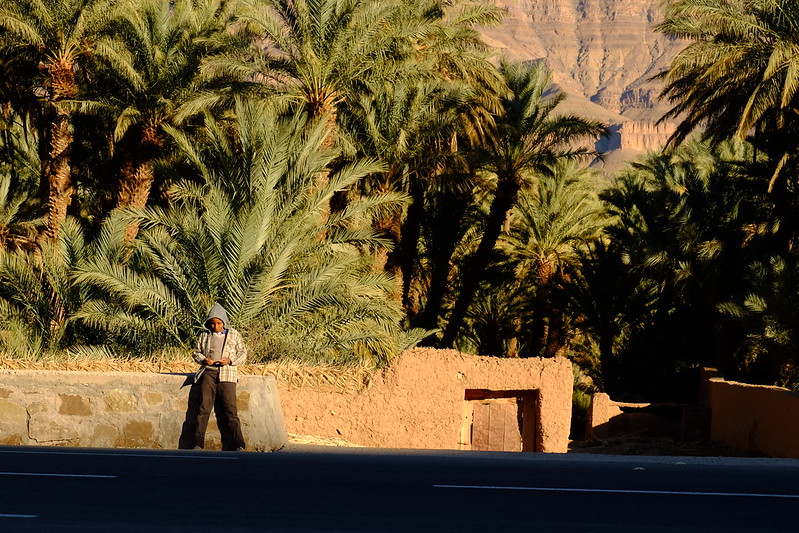
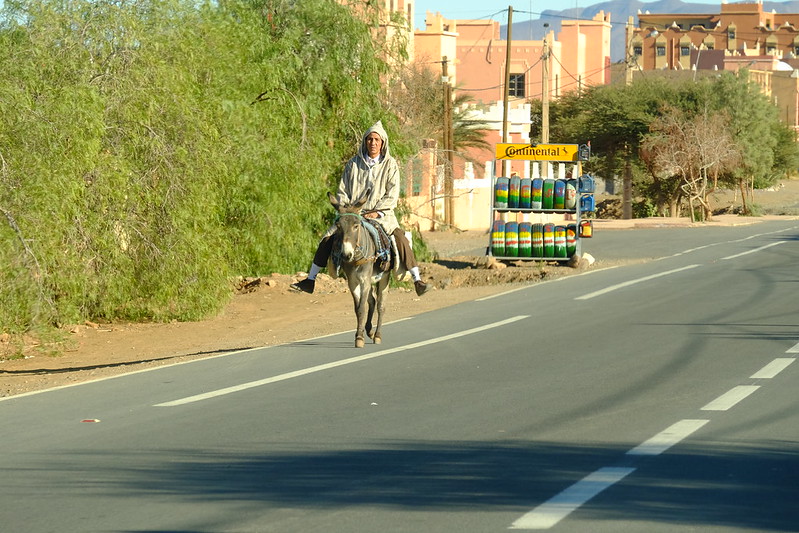





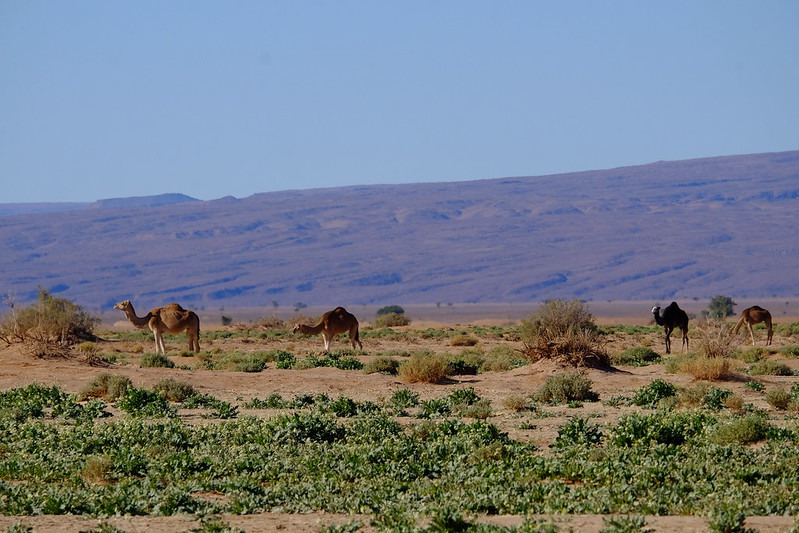
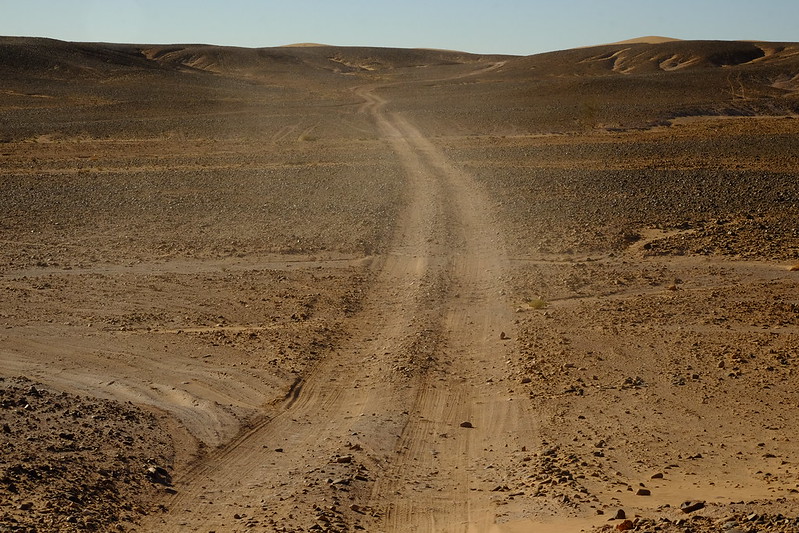






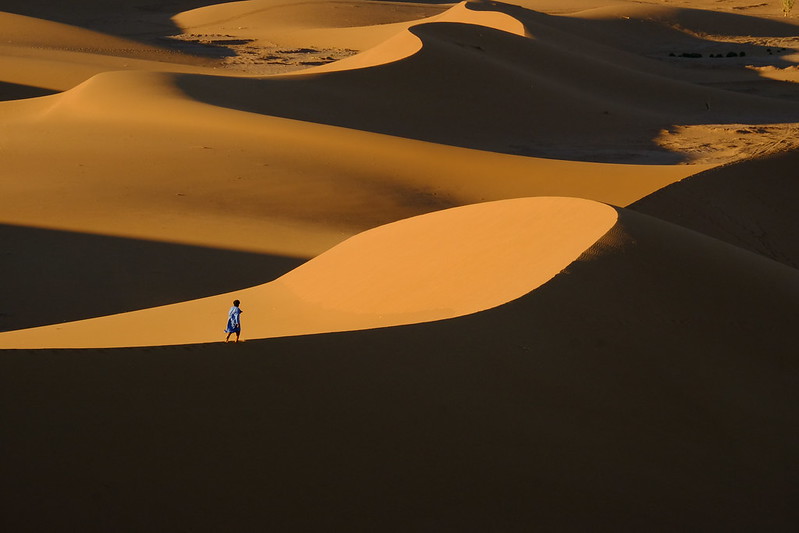

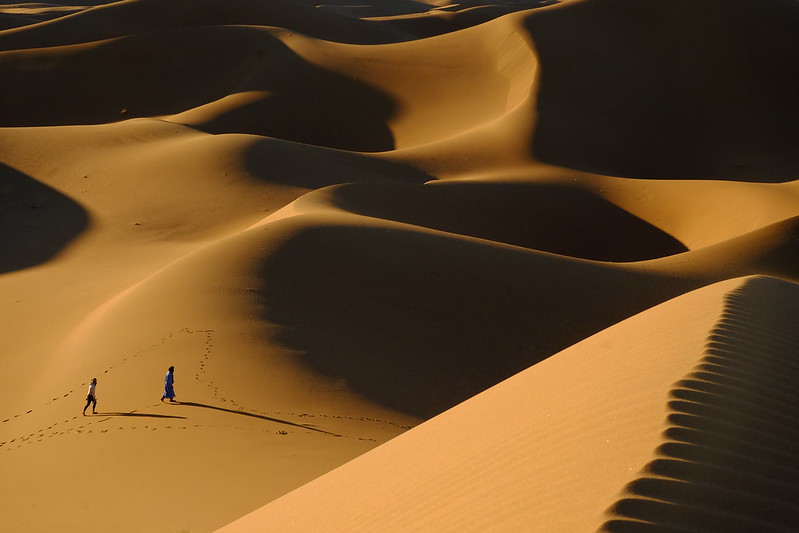



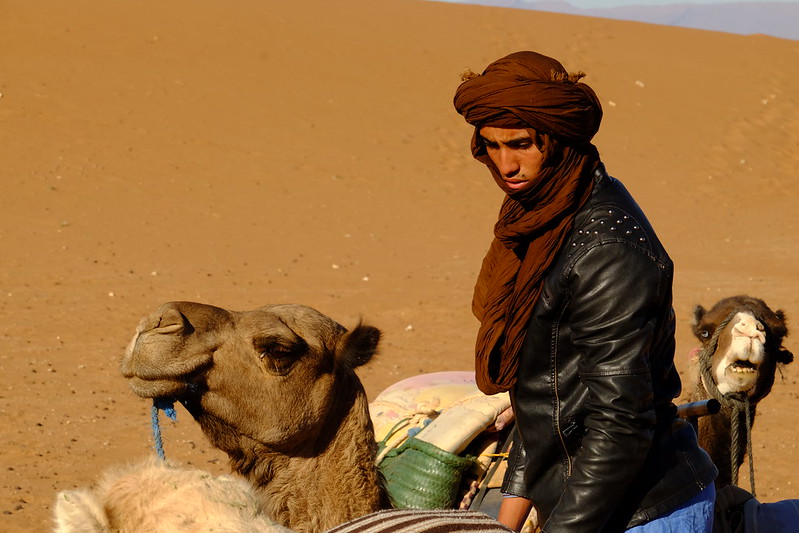

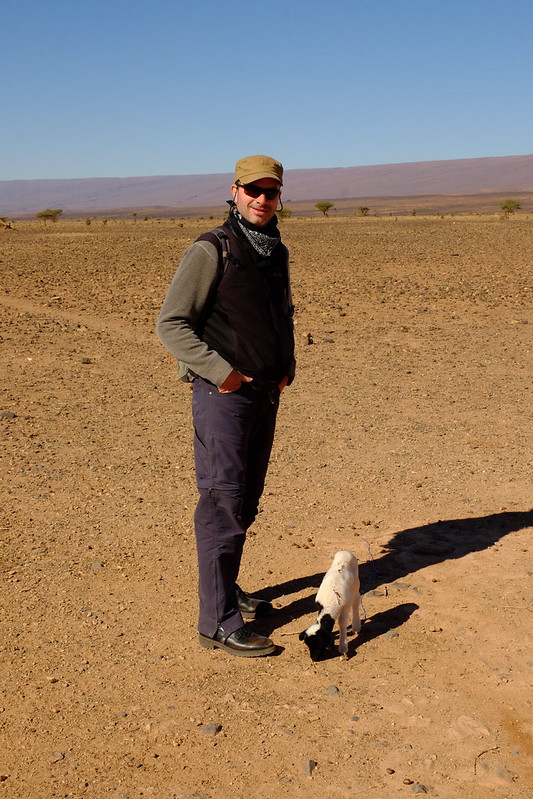







6 replies